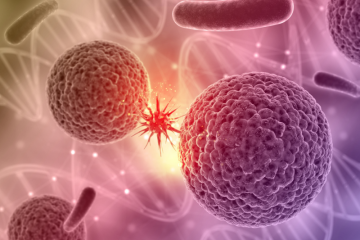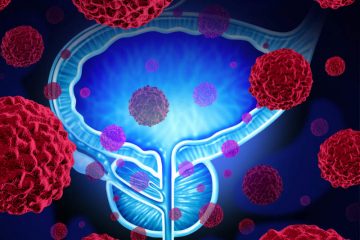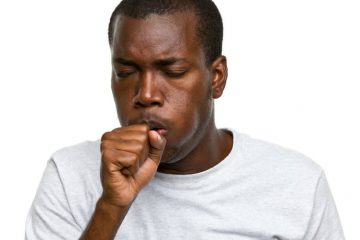Asthma in children
Frequent respiratory tract infections, night-time coughing fits, respiratory distress when moving and playing outdoors – if your child is not feeling well, it is natural that as a parent you want to do everything you can to aid their recovery. A diagnosis of ‘bronchial asthma’ initially raises many questions. You are probably looking for the best ways to support your child.
Bronchial asthma is the most common chronic disease in children – approximately one in ten children is affected. However, the prognosis for recovery is quite good in children. By puberty at the latest, more than half of the children are free from symptoms.
Early diagnosis coupled with proper treatment and training of the parent and child in symptom management enables the child to control their asthma and to have a carefree childhood
Causes of childhood asthma
A distinction between allergic and non-allergic asthma is made on the basis of their triggers; childhood asthma is very frequently related to allergies.
With allergic asthma, symptoms are triggered by the substances that the child has an allergic reaction to, for example animal hair or pollen.
Non-allergic asthma is caused by environmental stimuli. These may be respiratory tract infections or certain irritants, like indoor and outdoor pollutants and strong odours.
There is also a genetic component, i.e. the hereditary predisposition of having parents with allergies or respiratory tract diseases plays a role in the development of childhood asthma
Symptoms of childhood asthma
Typical signs of childhood asthma include frequent, intermittent coughing, a whistling or wheezing sound when breathing, shortness of breath, chest congestion or tightness and chest pain. Symptoms may occur at different time intervals and with different degrees of severity.
Breathing sounds in children with asthma
A typical indication of asthma in babies and children is a whistling sound (wheezing) while breathing. Apart from that, the child may make a healthy impression. The whistling intensifies during physical exertion or sports as well as with intense laughter or crying.
Coughing as a symptom of childhood asthma
Another common symptom is a dry cough, which increases at night. Just like the breathing sounds, the coughing occurs more intensely during exercise, laughter and crying .
Respiratory distress
An acute asthma attack may lead to respiratory distress. In infants and babies, respiratory distress is indicated by the child’s nostrils shaking violently when breathing. There is also a powerful contraction of the muscles below the costal arch, between the ribs or on the collarbone. In addition, the nails and lips may become blue in colour.
Older children usually realise that breathing is difficult. They then stop their play, sit down and support themselves with their hands on both sides to help them breathe more easily.
Additional symptoms
Asthma also may be accompanied by atypical symptoms, such as frequent colds, abdominal pain, loss of appetite, unwillingness to drink and general fatigue.
Diagnosis of childhood asthma
Precise diagnosis is made after examining the lungs. Not all methods for determining lung function are suitable for children. Infants can be examined in specialist clinics. From the age of four, lung function in children can be determined by means of spirometry, which is a test to determine how much the child is able to breathe in and out.
If connection with an allergy is suspected, then an allergy test is carried out (blood test and/or subsequent skin test).
Treatment of asthma
Since childhood asthma is chronic, the primary aim of therapy is to control the symptoms so your child can develop freely.
Treatment consists of several measures. In addition to the medication, your child should also avoid their trigger factors (if these are known).
Hypo-sensitisation, also known as allergen immunotherapy, can be carried out to lower the sensitivity to these triggers. This involves exposing the child to larger and larger amounts of allergen in an attempt to change the immune system’s response. Hypo-sensitisation can be promising if it has been possible to determine the triggering stimuli and if these are not too numerous.
As a supplementary measure, you also can encourage your child to exercise and practise sports. During sports, the bronchi expand, the oxygen supply is improved and the respiratory muscles are strengthened. Discuss with your paediatrician what type of exercise is most suitable for your child.
Sometimes a change of climate or staying in a region where there are fewer allergens can help with this.
It is highly recommended that you participate in patient training, ideally with your child. Training sessions are also available for young children, where they can learn in a playful way what is happening in their bodies and how the medication works. This helps them to become more self-confident and better able to deal with their symptoms. They learn that many children are affected and are not ashamed to use their medication as needed in the presence of friends and classmates.
Asthma therapy with medication
The medication used to treat childhood asthma can be divided into two groups. Long-term medication providing a preventative effect, which are often referred to as ‘controllers’. Glucocorticoids are an effective long-term treatment method. They inhibit the inflammatory readiness of the bronchi and are preferably administered in inhaled form so that the dose reaches the respiratory tract immediately.
In the case of an acute asthma attack, soothing medication is available. These are also called ‘relievers’. Their aim is to dilate the bronchi as quickly as possible allowing air to flow again.
Prevention of childhood asthma
The most important measure for preventing symptoms is to avoid factors which may trigger an asthma attack. Prevention is only possible if the allergens and/or irritants are known. Furthermore, long-term treatment with preventative medication also has an anti-inflammatory and preventative effect.


